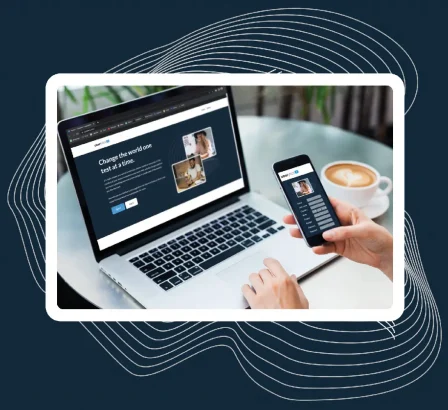Analyze Data and Generate UX insights
User research is an essential part of the UX design process. It helps us to understand our users, their needs, and their pain points. It provides the foundation for ultimately shaping the success of a product or service.
However, without a systematic approach to analyzing this data, it can be challenging to uncover the meaningful insights that drive informed design decisions. Also, it is critical to have a specific approach to the communication of research findings.
So, how should researchers go about data analysis and generating actionable insights? How can UX experts share these insights in a clear and compelling manner?

How to Analyze User Research Data?
Analyzing data is a critical step in the user research process. It is important that researchers make sense of the information and identify patterns, before translating the collected information into actionable insights.
In this regard, there are essential considerations to follow so researchers make the best out of this UX research phase.
1. Organize your data
As a UX researcher, the first step is to organize your quantitative/qualitative data. This will make it easier to find the information you need and to identify patterns and trends.
There are a few different ways to organize your raw data. You could create a spreadsheet, a mind map, or a document with headings for each type of data.
Once you’ve organized your data, take some time to familiarize yourself with it. Read through the transcripts of user interviews, look at the photos, and review the surveys full of qualitative data.
2. Identify key themes
As soon as you’re familiar with your data, it’s time to identify key themes. What are the recurring patterns and topics from user interviews? What are the things that users are saying over and over again?
There are a few different ways to identify key themes -whether it be after quantitative/qualitative research. You could read through your data and highlight the most important points. You could also use a coding system to identify different themes.
3. Synthesize your findings
When you have identified key themes in your quantitative/qualitative research, it’s time to synthesize your findings. This means turning your themes into insights that can inform your design decisions.
To synthesize your findings, ask yourself the following questions:
- What do these themes tell me about my users?
- What are my user needs and pain points?
- How can I design a product that meets my user needs?
Some additional tips for analyzing user research data:
- Be patient. It takes time to analyze data and to identify key themes.
- Be open-minded. Don’t be afraid to challenge your assumptions.
- Be collaborative. Share your findings with your team and get their feedback.
How to Generate Valuable Insights?
Once the data from user research has been analyzed, the next step is to generate insights and findings that can inform the design and development process.
This involves identifying key user needs, pain points, preferences, and opportunities for improvement based on the data analysis.
By deriving meaningful insights from the UX analysis stage, user researchers can gain a deeper understanding of the user experience and make informed decisions to create better products or services.
During the user research analysis phase, patterns and trends should have been identified. These patterns can serve as a starting point for generating insights.
Look for common themes, recurring issues, or notable user preferences that have emerged from the data. Consider the context in which these patterns occur and how they align with the goals of the project.

To generate actionable insights, ask yourself the following questions:
- What do these patterns and trends tell me about the users?
- What are the pain points and challenges that users frequently encounter?
- What are the preferences and expectations of the users?
- What opportunities for improvement or innovation have been identified? How can these opportunities be leveraged to enhance the user experience?
By generating insights from user research data, UX researchers can provide valuable guidance for the design and development process. These insights serve as a foundation for informed decision-making, helping to create user-centric solutions that address the identified needs, pain points, preferences, and opportunities for improvement.
How to Share User Insights with Stakeholders?
If you’re a UX researcher, you probably already know how important it is to carefully consider every step of a user research plan. You need to make sure you understand the problem space. Choose the most suitable research methods, identify and recruit the right target users, and figure out how to collect and analyze the data.
But do you put much thought into how you’re going to showcase your findings to your various stakeholders throughout the process? Communication is among the most critical skills in a researcher’s toolkit, as it drives stakeholder action. But many UX researchers just throw presentations together at the last minute.
Let’s examine how you can better approach communicating with stakeholders and enable them to make informed decisions.
1. Share Research Findings Continuously
Whether it’s due to individual or organizational reasons, many UX researchers view communicating their study findings as one big presentation at the end of their research plan.
This makes the process cumbersome for everybody and doesn’t provide feedback to the right stakeholders when they can make the most use of it.
Now, this doesn’t mean you should schedule more meetings with everybody to deliver lengthy presentations. Neither you nor your stakeholders have the time for that. What you can do is adopt different methods of continuous sharing of findings. Below are three methods you could use in tandem:
- Instant reports — Informal and unscheduled sharing with relevant stakeholders as soon as you uncover a finding. It’s best to choose a communication medium that offers permanence, such as a messaging application so that stakeholders can review your comments when they have the bandwidth for them.
- Findings repository — A collection of all of your documented results. Most researchers will already have some form of this but don’t think to share it with stakeholders. You can turn your repository into a communication tool by making it easy to filter and search with consistent use of meta documentation.
- Presentation reports — The more formal approach to communicating findings, often in the form of a Powerpoint presentation. Sharing these reports, or parts of them, outside of meetings can help different stakeholders make the most use of them.
Now, to figure out how and when to use each method, you should learn more about each stakeholder’s needs.
2. Understand Your User Needs

Each stakeholder group has different needs, subject matter expertise, authority over the project, abilities, and constraints. Furthermore, each of these attributes can change depending on the stage of the product’s life cycle. Knowing what these attributes are in context will help you develop an effective communication strategy.
Luckily, as a UX researcher, you already have the aptitude for learning about people’s needs and behaviors. Consequently, you can apply your user research skills to understand your stakeholders, perhaps through less formal methods.
Once you understand your stakeholders, you need to work out how to present your findings in a relevant manner. You should ask, “How can I transform this data into an actionable insight?”.
3. Transform Data Into Actionable Insights

A safe general rule in communicating with stakeholders is that they rarely have the expertise to interpret countless charts. You can develop insights by drawing relevant information from the data and presenting why it matters to you, why it matters to the project goals, and ultimately, why it should matter to your stakeholders.
While you should offer guidance for the next steps and recommendations, making actionable insights does not mean providing exact solutions. Your stakeholders will figure out how to refine their solutions. They just need you to show how these insights should impact their work.
It’s important to note that these insights only make sense in a broader context than what is typically discussed during a stakeholder meeting. Therefore, it’s important to reiterate not only why the findings matter, but how your work is serving a common goal.
Use Annotations, Highlight Reels, and Transcriptions to Share Key Findings
Userlytics’ suite of tools offers several simple and convenient ways to share your user insights in a bite-size format. Three of those tools are annotations, highlight reels and automated transcriptions.
Annotations are comments made on specific timeline moments of your participants’ video sessions. Study annotations offer the following perks:
- Allow you to create a shareable URL that directs to a specific timeline moment, titled with the name of your annotation for context
- Allow you to create a shareable URL that directs to a compilation of video clips, grouped together by themes and tags
- Allow you to share a list of videos that can be easily browsed through, with each video hyperlinked to a specific timeline moment

Highlight Reels are a collection of annotations grouped by theme (tag) or by the study activities your participants complete. Highlight reels allow you to compile the best moments of one or multiple studies, and share them with your stakeholders via a downloadable video or shareable link.

Userlytics’ automated video transcription capability, provided by Amazon, offers a unique way to quickly and efficiently transcribe lengthy video sessions in a variety of languages. Browse through the transcribed text copy of the audio of each participant session and identify key moments and events, without having to watch the entire session video. The transcription text is all timestamped. So clicking anywhere on the transcription will take you to that timeline moment in the video, making sharing key test moments with stakeholders easier.

Restate Goals and Tell a Story

A great way to approach sharing your UX research findings with stakeholders without needless self-gratification and repetitiveness is to tell a story about your users. Present a narrative arc of a user, or users, interacting with the system. Start with their goals, and present your insights into user issues as moments of action or conflict, until they reach their resolution so that you can draw recommendations from them.
Just remember that the story of a UX project never really ends – there will always be new challenges to encounter along the way. By presenting your actionable insights regularly to stakeholders in ways they’ll understand, you can make sure everybody remains on the same page.
Interested in UX Testing?
Data Visualizations
Article written by Paul Khawaja
About the Author: Collaborations

Our blog collaborators are a diverse group of professionals with extensive knowledge and experience in the field of user experience. They include UX researchers, designers, thought leaders, and industry professionals who are passionate about sharing their insights and expertise with others.
As collaborators, they contribute thoughtful and inspiring content that covers various aspects of the UX space, including emerging trends, best practices, and practical tips. Their articles are designed to help readers stay up-to-date with the latest developments in UX, as well as improve their own skills and knowledge in the field.
Read More Articles by Our CollaboratorsAnalyze Data and Generate UX insights
Analyze Data and Generate UX insights, Analyze Data and Generate UX insights
Analyze Data and Generate UX insights




